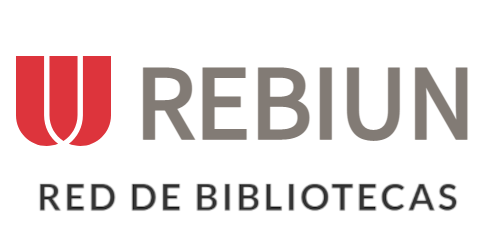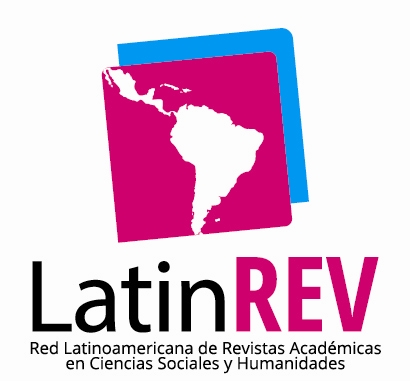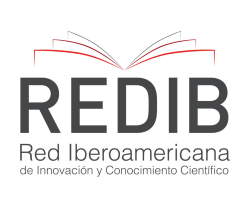Cinética de la Biorremediación de Aguas Residuales Contaminadas con Iones Cromato Aplicando Bacterias Cromoreductoras
Resumen
El estudio de la reducción de cromo hexavalente (Cr6+) aplicando biorremediación presenta ser una alternativa confiable y eficaz, además que no es tóxica y puede ser aplicado a escalas semi piloto y piloto. El objetivo del trabajo investigación es aislar cepas nativas de procesos industriales de curtido de cuero donde existe este tipo de contaminante y obtener datos cinéticos, variables de control y tiempo de remoción para luego proporcionar herramientas para dimensionar un reactor tipo batch que se encargue de realizar el tratamiento. Una cepa definida como Basillus spp (Gram +) con un crecimiento óptimo a pH 7 y 37ºC en un medio Luria Bertani con minerales (LBM), presentó gran adaptabilidad, demostrando en las pruebas del reactor batch un tiempo de aclimatación de 77.25 h, cinética de remoción de primer orden, una constante cinética de 0.0082 h-1, una eliminación del 100% de cromo partiendo de 2mM de Cr6+ y con un crecimiento positivo en un medio con 400 mM Cr6+. Al aumentar la temperatura de trabajo de 25 a 40ºC se observó que las constantes de trabajo disminuyen al igual que el tiempo de remoción de Cr6+.
Descargas
Citas
Abigail M, E. A., Samuel, M. S., & Chidambaram, R. (2015). Hexavalent chromium biosorption studies using Penicillium griseofulvum MSR1 a novel isolate from tannery effluent site: Box-Behnken optimization, equilibrium, kinetics and thermodynamic studies. Journal of the Taiwan Institute of Chemical Engineers, 49, 156–164. https://doi.org/10.1016/J.JTICE.2014.11.026
Ahmad, W. A., Wan Ahmad, W. H., Karim, N. A., Santhana Raj, A. S., & Zakaria, Z. A. (2013). Cr(VI) reduction in naturally rich growth medium and sugarcane bagasse by Acinetobacter haemolyticus. International Biodeterioration & Biodegradation, 85, 571–576.
https://doi.org/10.1016/J.IBIOD.2013.01.008
Alvarez, A. H., Moreno-Sánchez, R., & Cervantes, C. (1999). Chromate Efflux by Means of the ChrA Chromate Resistance Protein from Pseudomonas aeruginosa. Journal of Bacteriology, 181(23), 7398–7400. https://doi.org/10.1128/JB.181.23.7398-7400.1999
André, S., Charton, A., Pons, A., Vannier, C., & Couvert, O. (2021). Viability of bacterial spores surviving heat-treatment is lost by further incubation at temperature and pH not suitable for growth. Food Microbiology, 95, 103690. https://doi.org/10.1016/J.FM.2020.103690
Aravindhan, R., Fathima, A., Selvamurugan, M., Rao, J. R., & Balachandran, U. N. (2012). Adsorption, desorption, and kinetic study on Cr(III) removal from aqueous solution using Bacillus subtilis biomass. Clean Technologies and Environmental Policy, 14(4), 727–735.
https://doi.org/10.1007/S10098-011-0440-7
Arishi, A., & Mashhour, I. (2021). Microbial mechanisms for remediation of hexavalent chromium and their large-scale applications; Current research and future directions. In Journal of Pure and Applied Microbiology (Vol. 15, Issue 1, pp. 53–67). Journal of Pure and Applied Microbiology. https://doi.org/10.22207/JPAM.15.1.32
Bader, J. L., Gonzalez, G., Goodell, P. C., Pillai, S. D., & Ali, A. S. (1999). Chromium-Resistant Bacterial Populations from a Site Heavily Contaminated with Hexavalent Chromium. Water, Air, and Soil Pollution, 109(1), 263–276. https://doi.org/10.1023/A:1005075800292
Boopathy, R. (2000). Factors limiting bioremediation technologies. Bioresource Technology, 74(1), 63–67. https://doi.org/https://doi.org/10.1016/S0960-8524(99)00144-3
Chatterjee, S., Sau, G. B., & Mukherjee, S. K. (2009, August). Plant growth promotion by a hexavalent chromium reducing bacterial strain, Cellulosimicrobium cellulans KUCr3. World Journal of Microbiology and Biotechnology, 25(10), 1829–1836.
https://doi.org/10.1007/S11274-009-0084-5
de Lorenzo, V. (2008). Systems biology approaches to bioremediation. Current Opinion in Biotechnology, 19(6), 579–589. https://doi.org/https://doi.org/10.1016/j.copbio.2008.10.004
Elahi, A., Ajaz, M., Rehman, A., Vuilleumier, S., Khan, Z., & Hussain, S. Z. (2019). Isolation, characterization, and multiple heavy metal-resistant and hexavalent chromium-reducing Microbacterium testaceum B-HS2 from tannery effluent. Journal of King Saud University - Science, 31(4), 1437–1444. https://doi.org/10.1016/J.JKSUS.2019.02.007
Elahi, A., Rehman, A., Zajif Hussain, S., Zulfiqar, S., & Shakoori, A. R. (2022). Isolation and characterization of a highly effective bacterium Bacillus cereus b-525k for hexavalent chromium detoxification. Saudi Journal of Biological Sciences, 29(4), 2878–2885.
https://doi.org/10.1016/J.SJBS.2022.01.027
Fogler, H. S. (2022). Chapter 7 - Collection and Analysis of Rate Data. In Elements of Chemical Reaction Engineering (6th ed., pp. 303–342). Pearson Education Limited.
Fogler, H. S. (2022). Chapter 9 - Reaction Mechanisms, Pathways, Bioreactions, and Bioreactors. In Elements of Chemical Reaction Engineering (6th ed., pp. 401–474). Pearson Education Limited.
Ghosh, S., Jasu, A., & Ray, R. R. (2021). Hexavalent chromium bioremediation with insight into molecular aspect: an overview. Bioremediation Journal, 25(3), 225–251.
https://doi.org/10.1080/10889868.2021.1884529
Gu, R., Gao, J., Dong, L., Liu, Y., Li, X., Bai, Q., Jia, Y., & Xiao, H. (2020). Chromium metabolism characteristics of coexpression of ChrA and ChrT gene. Ecotoxicology and Environmental Safety, 204. https://doi.org/10.1016/j.ecoenv.2020.111060
Hrynkiewicz, K., & Baum, C. (2014). Application of Microorganisms in Bioremediation of Environment from Heavy Metals. In A. Malik, E. Grohmann, & R. Akhtar (Eds.), Environmental Deterioration and Human Health: Natural and anthropogenic determinants (pp. 215–227). Springer Netherlands. https://doi.org/10.1007/978-94-007-7890-0_9
Jiang, Y., McAdam, E., Zhang, Y., Heaven, S., Banks, C., & Longhurst, P. (2019). Ammonia inhibition and toxicity in anaerobic digestion: A critical review. Journal of Water Process Engineering, 32, 100899. https://doi.org/10.1016/J.JWPE.2019.100899
Johnson, N. W., Gedalanga, P. B., Zhao, L., Gu, B., & Mahendra, S. (2020). Cometabolic biotransformation of 1,4-dioxane in mixtures with hexavalent chromium using attached and planktonic bacteria. Science of The Total Environment, 706, 135734. https://doi.org/https://doi.org/10.1016/j.scitotenv.2019.135734
Kalola, V., & Desai, C. (2020). Biosorption of Cr(VI) by Halomonas sp. DK4, a halotolerant bacterium isolated from chrome electroplating sludge. Environmental Science and Pollution Research, 27(22), 27330–27344. https://doi.org/10.1007/S11356-019-05942-0/METRICS
Karthik, C., Barathi, S., Pugazhendhi, A., Ramkumar, V. S., Thi, N. B. D., & Arulselvi, P. I. (2017). Evaluation of Cr(VI) reduction mechanism and removal by Cellulosimicrobium funkei strain AR8, a novel haloalkaliphilic bacterium. Journal of Hazardous Materials, 333, 42–53. https://doi.org/10.1016/J.JHAZMAT.2017.03.037
Kerur, S. S., Bandekar, S., Hanagadakar, M. S., Nandi, S. S., Ratnamala, G. M., & Hegde, P. G. (2021). Removal of hexavalent Chromium-Industry treated water and Wastewater: A review. Materials Today: Proceedings, 42, 1112–1121. https://doi.org/https://doi.org/10.1016/j.matpr.2020.12.492
Kumar, A., Saxena, G., Kumar, V., & Chandra, R. (2021). Environmental contamination, toxicity profile and bioremediation approaches for treatment and detoxification of pulp paper industry effluent. Bioremediation for Environmental Sustainability: Toxicity, Mechanisms of Contaminants Degradation, Detoxification and Challenges, 375–402. https://doi.org/10.1016/B978-0-12-820524-2.00015-8
Kumaresan Sarankumar, R., Arulprakash, A., Devanesan, S., Selvi, A., AlSalhi, M. S., Rajasekar, A., & Ahamed, A. (2020). Bioreduction of hexavalent chromium by chromium resistant alkalophilic bacteria isolated from tannery effluent. Journal of King Saud University - Science, 32(3), 1969–1977. https://doi.org/https://doi.org/10.1016/j.jksus.2020.02.010
Li, L., Shang, X., Sun, X., Xiao, X., Xue, J., Gao, Y., & Gao, H. (2021). Bioremediation potential of hexavalent chromium by a novel bacterium Stenotrophomonas acidaminiphila 4-1. Environmental Technology & Innovation, 22, 101409. https://doi.org/https://doi.org/10.1016/j.eti.2021.101409
Liu, Shijie. (2020). Chapter 14 - Cell cultivation. In Bioprocess Engineering: Kinetics, Sustainability and Reactor Design (3rd ed., pp. 593–658). Elsevier.
Pezo Galdea, J. I., & Medina Bacilio, J. M. (2024). La desnutrición y su influencia en el rendimiento académico de los estudiantes de una escuela de educación básica en la zona rural del Cantón Santa Elena. Estudios Y Perspectivas Revista Científica Y Académica , 4(2), 292–309. https://doi.org/10.61384/r.c.a.v4i2.222
Manzano Vela, M. P. (2024). Prevalencia y epidemiología de la hepatitis A en niños menores de 6 años: Una revisión sistemática de la literatura. Revista Científica De Salud Y Desarrollo Humano, 5(2), 69–100. https://doi.org/10.61368/r.s.d.h.v5i2.122
González García, J. S., Vázquez Villa, L., Inguanzo, R. F., Contreras Bañuelos, I. R., & Salazar Valdés, D. A. (2024). Los juegos motores para facilitar el aprendizaje de contenidos matemáticos: propuesta para docentes en formación. Emergentes - Revista Científica, 4(1), 123–141. https://doi.org/10.60112/erc.v4i1.103
Morales, J. C. (2023). Fostering Recycling Culture Through Playful Strategies. Revista Veritas De Difusão Científica, 4(1), 143–160. https://doi.org/10.61616/rvdc.v4i1.41
Martínez, O., Aranda , R., Barreto , E., Fanego , J., Fernández , A., López , J., Medina , J., Meza , M., Muñoz , D., & Urbieta , J. (2024). Los tipos de discriminación laboral en las ciudades de Capiatá y San Lorenzo. Arandu UTIC, 11(1), 77–95. Recuperado a partir de https://www.uticvirtual.edu.py/revista.ojs/index.php/revistas/article/view/179
v, H., & Quispe Coca, R. A. (2024). Tecno Bio Gas. Horizonte Académico, 4(4), 17–23. Recuperado a partir de https://horizonteacademico.org/index.php/horizonte/article/view/14
Da Silva Santos , F., & López Vargas , R. (2020). Efecto del Estrés en la Función Inmune en Pacientes con Enfermedades Autoinmunes: una Revisión de Estudios Latinoamericanos. Revista Científica De Salud Y Desarrollo Humano, 1(1), 46–59. https://doi.org/10.61368/r.s.d.h.v1i1.9
Macwilliams, M. P., & Liao, M.-K. (2016). Luria Broth (LB) and Luria Agar (LA) Media and Their Uses Protocol. www.asmscience.org
Mayra Claros Magne, & Noel Ortuño Castro. (2016). Manual de Laboratorio de Microbiologia Agricola.
Ministerio de Desarrollo Productivo y Economía Plural (MDPyEP), & Dirección General de Análisis Productivo (DAPRO). (2020). Complejo productivo del cuero.
Murthy, M. K., Khandayataray, P., Padhiary, S., & Samal, D. (2023). A review on chromium health hazards and molecular mechanism of chromium bioremediation. Rev Environ Health, 38(3), 461–478. https://doi.org/doi:10.1515/reveh-2021-0139
Najafpour, G. D. (2015). Chapter 5 - Growth Kinetics. In G. D. Najafpour (Ed.), Biochemical Engineering and Biotechnology (Second Edition) (pp. 127–192). Elsevier. https://doi.org/https://doi.org/10.1016/B978-0-444-63357-6.00005-5
Narayani, M., & Shetty, K. V. (2013). Chromium-Resistant Bacteria and Their Environmental Condition for Hexavalent Chromium Removal: A Review. Critical Reviews in Environmental Science and Technology, 43(9), 955–1009. https://doi.org/10.1080/10643389.2011.627022
Ohtake, H., Fujii, E., & Toda, K. (1990). Bacterial Reduction of Hexavalent Chromium: Kinetic Aspects of Chromate Reduction by Enterobacter cloacae HO1. Biocatalysis, 4(2–3), 227–235. https://doi.org/10.3109/10242429008992094
Osail, S., Sanny, S., & Kabir, M. (2023). Bioremediation of Hexavalent Chromium By Bacteria Isolated From Buriganga River, Dhaka City. Stamford Journal of Microbiology, 13(1), 25–29. https://doi.org/10.3329/sjm.v13i1.70411
Owlad, M., Aroua, M. K., Daud, W. A. W., & Baroutian, S. (2009). Removal of Hexavalent Chromium-Contaminated Water and Wastewater: A Review. Water, Air, and Soil Pollution, 200(1), 59–77. https://doi.org/10.1007/s11270-008-9893-7
Plestenjak, E., Kraigher, B., Leskovec, S., Mandic Mulec, I., Marković, S., Ščančar, J., & Milačič, R. (2022). Reduction of hexavalent chromium using bacterial isolates and a microbial community enriched from tannery effluent. Scientific Reports, 12(1). https://doi.org/10.1038/s41598-022-24797-z
Prabhakaran, D. C., & Subramanian, S. (2017). Studies on the Bioremediation of Chromium from Aqueous Solutions Using C. paurometabolum. Transactions of the Indian Institute of Metals, 70(2), 497–509. https://doi.org/10.1007/S12666-016-1009-2/METRICS
Pushkar, B., Sevak, P., Parab, S., & Nilkanth, N. (2021). Chromium pollution and its bioremediation mechanisms in bacteria: A review. In Journal of Environmental Management (Vol. 287). Academic Press. https://doi.org/10.1016/j.jenvman.2021.112279
Ramírez-Díaz, M. I., Riveros-Rosas, H., Campos-García, J., & Cervantes, C. (2009). Reducción Bacteriana De Cromo Hexavalente: Mecanismos Y Aplicaciones. REB, 28(3), 73–79.
Rice, E. W., Baird, R. B., & Eaton, A. D. (2023). Standard Methods for the Examination of Water and Wastewater, 23rd Edition.
Seragadam, P., Rai, A., Ghanta, K. C., Srinivas, B., Lahiri, S. K., & Dutta, S. (2021). Bioremediation of hexavalent chromium from wastewater using bacteria-a green technology. Biodegradation, 32(4), 449–466. https://doi.org/10.1007/s10532-021-09947-w
Sreedevi, P. R., Suresh, K., & Jiang, G. (2022). Bacterial bioremediation of heavy metals in wastewater: A review of processes and applications. In Journal of Water Process Engineering (Vol. 48). Elsevier Ltd. https://doi.org/10.1016/j.jwpe.2022.102884
Ukhurebor, K. E., Aigbe, U. O., Onyancha, R. B., Nwankwo, W., Osibote, O. A., Paumo, H. K., Ama, O. M., Adetunji, C. O., & Siloko, I. U. (2021). Effect of hexavalent chromium on the environment and removal techniques: A review. In Journal of Environmental Management (Vol. 280). Academic Press. https://doi.org/10.1016/j.jenvman.2020.111809
Viti, C., Pace, A., & Giovannetti, L. (2003). Characterization of Cr(VI)-resistant bacteria isolated from chromium-contaminated soil by tannery activity. Current Microbiology, 46(1), 1–5. https://doi.org/10.1007/S00284-002-3800-Z
Wood, I. P., Elliston, A., Ryden, P., Bancroft, I., Roberts, I. N., & Waldron, K. W. (2012). Rapid quantification of reducing sugars in biomass hydrolysates: Improving the speed and precision of the dinitrosalicylic acid assay. Biomass and Bioenergy, 44, 117–121.
https://doi.org/10.1016/j.biombioe.2012.05.003
Xie, S. (2024). Water contamination due to hexavalent chromium and its health impacts: exploring green technology for Cr (VI) remediation. In Green Chemistry Letters and Reviews (Vol. 17, Issue 1). Taylor and Francis Ltd. https://doi.org/10.1080/17518253.2024.2356614
Zhang, R., & Tian, Y. (2020). Characteristics of natural biopolymers and their derivative as sorbents for chromium adsorption: a review. In Journal of Leather Science and Engineering (Vol. 2, Issue 1). Springer. https://doi.org/10.1186/s42825-020-00038-9
Zohri, A. N. A., Abdelazim, M., & Ibrahim, S. (2018). 2-Aminoethanaminium 2-(ethoxycarbonyl)-4,6-dinitrophenolate as a greener route in reducing sugar quantification. MethodsX, 5, 609–612. https://doi.org/10.1016/J.MEX.2018.05.017
Derechos de autor 2025 Angel Johann Morales Bernal , Carlos Marcelo Camacho Caero

Esta obra está bajo licencia internacional Creative Commons Reconocimiento 4.0.













.png)




















.png)
1.png)


